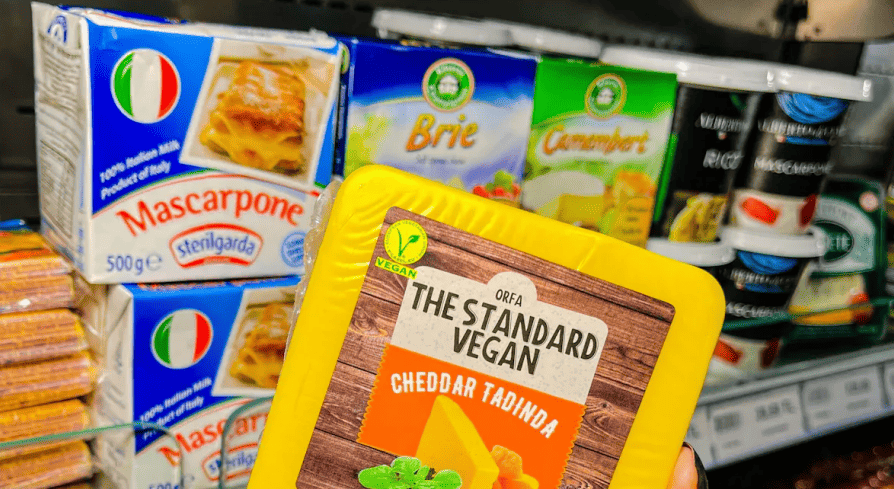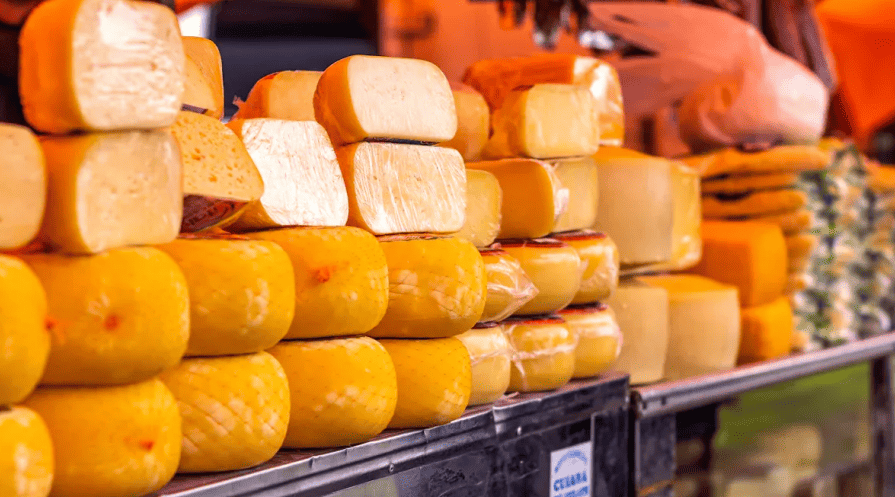- WhatsApp: +86 13606526028
- Email: contact@utien.com
Cheese packaging plays a vital role in maintaining maximum freshness and ensuring product quality. You must prioritize the importance of cheese packaging to prevent spoilage and contamination. Common challenges include maintaining hygiene in production, selecting materials that shield against contamination, and adhering to safety standards to avoid bacterial growth. Proper solutions safeguard food integrity and extend shelf life, delivering maximum freshness to consumers. Compress Packaging Machines further enhance efficiency, streamlining the process for consistent results.
Picking the right packaging keeps cheese fresh and safe. Choices like vacuum packs and special air packaging make cheese last longer.
Keeping things clean during packaging is very important. Clean machines, sanitized spaces, and trained workers stop germs and keep food safe.
New packaging ideas, like eco-friendly materials and smart tools, improve cheese quality and meet customer needs for freshness and caring for the planet.

Choosing the right materials for cheese packaging is crucial for preserving freshness and extending shelf-life. You should consider materials that balance durability, cost-effectiveness, and sustainability. Common options include:
Parchment Paper: Ideal for soft and semi-soft cheeses, as it resists grease and allows the cheese to breathe.
Wax Paper: Provides a moisture barrier while maintaining breathability, suitable for various cheese types.
Vacuum Sealing: An airtight solution that prevents bacterial growth, extending shelf-life for hard and semi-hard cheeses.
Glass Containers: Eco-friendly and reusable, offering an airtight seal for fresh cheeses.
Modified Atmosphere Packaging (MAP): Alters gas composition to inhibit bacterial growth, ensuring longer shelf-life.
Edible Coatings and Films: Biodegradable and safe for consumption, these coatings protect cheese while reducing waste.
Selecting the right material ensures your cheese maintains its quality and appeals to the consumer.
Maintaining hygiene in cheese packaging is essential for food safety and consumer trust. Global standards emphasize:
Washdown Machinery: Use equipment resistant to high-pressure cleaning and chemicals to minimize contamination risks.
Facility Sanitation: Construct facilities with non-porous materials and ensure proper drainage for easy cleaning.
Staff Cleanliness: Train staff on hygiene practices and provide adequate hand-cleaning facilities.
Adhering to these standards ensures your dairy products remain safe and high-quality.
Compress packaging machines revolutionize cheese packaging solutions by automating processes and enhancing efficiency. These machines tightly seal cheese, preserving freshness and extending shelf-life. They also improve hygiene by reducing contamination risks and ensuring compliance with safety regulations. Additionally, they offer consistent portioning, protect products during transit, and reduce food waste. By incorporating compress packaging machines, you streamline operations and deliver high-quality food products to consumers.
Vacuum-sealed packaging is one of the most effective methods for preserving cheese. This technique creates an airtight environment, acting as a time capsule that locks in the cheese's original flavor and texture. Vacuum-sealed cheese can last 4-8 months in the refrigerator, compared to just 1-2 weeks when stored in conventional bags. This method also prevents mold growth and maintains the perfect moisture balance, ensuring the cheese remains fresh.
Some advantages of vacuum-sealed packaging include:
Extended shelf life, keeping cheese fresh for months.
Prevention of bacteria and mold growth.
Space efficiency, as vacuum-sealed cheese occupies less storage space.
Elimination of cross-contamination, as each cheese is sealed individually.
This method works well for hard cheeses like Cheddar and Parmesan, soft cheeses like Brie, and aged cheeses, preserving their unique characteristics without further aging.
Modified Atmosphere Packaging (MAP) uses a specific gas mixture to preserve cheese quality. Common gases include nitrogen (N2) and carbon dioxide (CO2). For instance, a 70% N2 and 30% CO2 mixture effectively inhibits microbiological growth and slows acidity loss. This method ensures cheese maintains its sensory qualities, such as taste and texture, even after extended storage.
MAP is particularly beneficial for fresh cheeses, as it preserves their delicate flavors and textures. Studies show that cheese packed under MAP retains high quality for up to 18 days, making it an excellent choice for extending the shelf life of food products.
Thermoformed trays offer a versatile and efficient solution for cheese packaging. These trays are created using roll stock film, which reduces material costs and minimizes waste. They also improve production efficiency by up to 35% compared to traditional methods.
Benefit | Description |
Material Cost Savings | Utilizing roll stock film leads to significant savings in material costs. |
Reduced Carbon Footprint | Denser shipments result in lower carbon emissions due to fewer truckloads needed. |
Increased Production Efficiency | Integration of tray sealing can boost cheese production by up to 35%. |
Minimal Waste | Sustainable tray sealing achieves 100% top film utilization, reducing waste significantly. |
Thermoformed trays are ideal for soft cheeses, aged cheeses, and other cheese varieties, offering a practical and eco-friendly packaging solution.
Traditional cheese packaging methods, such as wax coatings, remain popular for their simplicity and effectiveness. Wax coatings create a protective barrier that prevents moisture loss and shields the cheese from external contaminants. This method is particularly suitable for aged cheeses, as it allows them to mature naturally while maintaining their quality.
Wax-coated cheeses are visually appealing and often associated with artisanal food products. This method also aligns with sustainable practices, as wax is biodegradable and reduces reliance on synthetic materials.
Maintaining hygiene is critical to ensuring the safety and quality of cheese. You must follow strict protocols to prevent contamination during the packaging process. Key steps include:
Washdown Machinery: Clean all machinery and equipment thoroughly to eliminate contamination risks.
Facility Sanitation: Use non-porous materials for construction and design floors with proper drainage for easy cleaning.
Staff Cleanliness: Provide staff with protective gear, hygiene training, and access to hand-cleaning stations.
Avoid common hygiene mistakes by implementing these practices consistently. A clean environment ensures your cheese retains its freshness and meets food safety standards.

Choosing the right machinery is essential for effective cheese packaging. Consider the following factors:
Factor | Description |
Production volume | Select a machine that matches your production scale without compromising packaging quality. |
Packaging versatility | Opt for equipment that accommodates various cheese types, sizes, and packaging formats. |
Reliability and durability | Invest in machinery from reputable manufacturers known for quality and longevity. |
After-sales support | Ensure the manufacturer provides technical support, spare parts, and training. |
Automation level | Choose between manual, semi-automatic, or fully automatic machines based on your efficiency needs. |
Selecting the right machinery streamlines operations, enhances product quality, and ensures your cheese packaging solutions remain efficient.
Reducing waste is a vital aspect of sustainable cheese packaging. You can adopt strategies like using thinner films to minimize plastic usage and carbon footprint. Innovative tray sealing applications nearly eliminate plastic waste, producing only 2% scrap compared to traditional methods that generate 15-20%. Paperboard tray sealing offers an even more sustainable option, reducing plastic usage by up to 90%.
Balancing waste reduction with packaging quality is achievable by integrating biobased, compostable materials. These advancements not only preserve the freshness of your cheese but also align with eco-friendly food packaging options.
Sustainable materials are transforming cheese packaging into an eco-friendly process while maintaining product quality. You can explore several innovative options:
Paper-based materials offer breathability and flexibility, ideal for preserving cheese.
Parchment and wax paper allow cheese to breathe while protecting it from external factors.
Glass containers provide an airtight seal, making them reusable and eco-friendly.
Biodegradable films made from plant-based polymers reduce waste and support sustainability.
Edible coatings, crafted from natural ingredients, protect cheese and are safe for consumption.
Leading producers are also adopting advanced thermoforming techniques to minimize plastic use. Sustainable Vacuum Skin Packaging (VSP) reduces raw materials while maintaining sealing efficiency. Paperboard tray sealing achieves up to a 90% reduction in plastic usage, offering a significant environmental benefit.
Benefit | Description |
Reduction in Plastic Use | Transitioning to biobased materials reduces reliance on plastics. |
Decreased Carbon Emissions | Denser shipments and advanced technologies lower carbon footprints. |
Waste Minimization | Sustainable tray sealing reduces film waste by 40%. |
Advanced sealing technologies enhance cheese packaging by extending shelf life and preserving freshness. Vacuum sealing creates an airtight environment, preventing mold and bacteria growth. Modified Atmosphere Packaging (MAP) modifies gas composition to slow aging and maintain cheese quality. Edible coatings and films offer a sustainable alternative, reducing waste while protecting the product.
Active packaging integrates agents that extend shelf life and maintain product quality. Recent innovations in tray sealing aim to eliminate lidding film scrap, improving sustainability. Sealstrip solutions provide tamper-evident, resealable features, ensuring convenience and safety.
Smart packaging solutions revolutionize how you monitor and maintain cheese quality. These technologies actively protect cheese by regulating moisture and oxygen levels. Time-temperature indicators help you identify if cheese has been exposed to unfavorable conditions. Gas sensors detect spoilage gases, ensuring the product remains safe.
Smart packaging also incorporates QR codes and RFID tags, offering real-time information about cheese freshness. While these technologies require significant investment, they align with consumer demands for transparency and safety. By adopting smart solutions, you can enhance customer trust and satisfaction.
Effective cheese packaging solutions are essential for preserving product quality and meeting consumer expectations. Techniques like vacuum-sealed and modified atmosphere packaging ensure freshness while extending shelf life. Innovations such as bioplastics and QR codes highlight the industry's commitment to sustainability and transparency. By adopting these practices, you can achieve a balance between quality, efficiency, and environmental responsibility.
Wrap the cheese in parchment paper, then place it in an airtight container. Store it in the refrigerator to maintain freshness and prevent drying.
Look for signs like mold, an unpleasant odor, or a slimy texture. If you notice any of these, discard the cheese immediately.
Yes, many manufacturers now offer eco-friendly options like biodegradable films, paper-based materials, and reusable glass containers to reduce environmental impact.
By continuing to use the site you agree to our privacy policy Terms and Conditions.